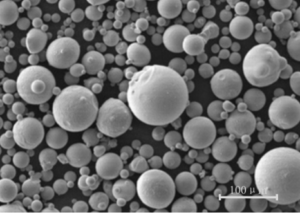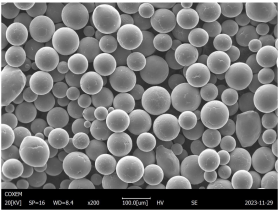Enhancing 3D Printing Efficiency: Exploring the Potential of Titanium Powder
In recent years, 3D printing has revolutionized manufacturing processes across various industries. This innovative technology allows for the creation of intricate objects with high precision and customization. One key factor in optimizing 3D printing efficiency is the choice of materials. Among the many options available, titanium powder has emerged as a promising material that offers unique advantages for additive manufacturing. In this article, we will delve into the potential of titanium powder in enhancing 3D printing efficiency, exploring its properties, applications, and future prospects.
Understanding Titanium Powder for 3D Printing
What is Titanium Powder?
Titanium powder is a fine, granular substance composed of small particles of titanium. It is produced through various processes, including gas atomization and plasma atomization, which result in the formation of spherical particles with controlled size and distribution. The purity and quality of titanium powder are crucial for achieving optimal results in 3D printing applications.
Properties and Advantages of Titanium Powder
Titanium powder possesses several properties that make it an attractive choice for additive manufacturing:
-
Lightweight and High Strength: Titanium is renowned for its exceptional strength-to-weight ratio. By utilizing titanium powder in 3D printing, manufacturers can create lightweight yet sturdy components, reducing overall material consumption.
-
Corrosion Resistance: Titanium exhibits excellent resistance to corrosion, making it ideal for applications in harsh environments or industries where exposure to corrosive substances is common.
-
Biocompatibility: Titanium is biocompatible, meaning it can be used in medical and dental applications without adverse reactions in the human body. This makes it suitable for producing implants, prosthetics, and other healthcare devices.
-
Heat Resistance: Titanium powder can withstand high temperatures, making it suitable for applications where components are exposed to elevated heat or rapid temperature changes.
-
Design Flexibility: 3D printing with titanium powder enables the production of complex geometries and intricate designs that would be challenging to achieve with traditional manufacturing methods.
Applications of Titanium Powder in 3D Printing
The unique properties of titanium powder open up a wide range of applications in various industries:
1. Aerospace and Aviation
The aerospace and aviation sectors can benefit greatly from 3D printing with titanium powder. Lightweight titanium components can reduce aircraft weight, resulting in improved fuel efficiency. Moreover, the exceptional strength of titanium ensures structural integrity and enhances overall safety.
2. Medical and Dental
In the medical field, titanium powder enables the production of patient-specific implants, prosthetics, and surgical instruments. Its biocompatibility and corrosion resistance make it a valuable material for healthcare applications. Additionally, 3D printing with titanium powder allows for the creation of porous structures, promoting bone integration and tissue growth.
3. Automotive
The automotive industry can leverage titanium powder for lightweight component production, contributing to enhanced fuel efficiency and reduced emissions. Furthermore, 3D printing with titanium enables the manufacturing of complex parts with integrated functionalities, streamlining the assembly process.
4. Industrial and Tooling
Titanium powder can be utilized in the production of industrial and tooling equipment, offering improved strength and durability. Its resistance to corrosion ensures longevity, making it suitable for applications in harsh operating conditions.
Challenges and Future Prospects
While titanium powder presents numerous advantages for 3D printing, there are still challenges to overcome:
-
Cost: Titanium powder is relatively expensive compared to other materials. However, as technology advances and the demand for titanium powder increases, the costs are expected to decrease gradually.
-
Process Optimization: Achieving optimal process parameters and ensuring consistent powder quality are crucial for successful 3D printing with titanium powder. Ongoing research and development efforts aim to refine the printing processes and enhance overall efficiency.
-
Material Availability: Titanium is not as readily available as more common materials, which may limit its widespread adoption. However, advancements in extraction and production methods are expected to alleviate this constraint in the future.
As researchers and manufacturers continue to explore the potential of titanium powder, we can anticipate exciting developments and advancements in additive manufacturing. Enhanced 3D printing efficiency, coupled with the unique properties of titanium, holds immense promise for transforming various industries.
Conclusion
Titanium powder offers a multitude of benefits in the realm of 3D printing, allowing for the creation of lightweight, corrosion-resistant, and highly customizable components. With applications spanning aerospace, medical, automotive, and industrial sectors, titanium powder is poised to revolutionize manufacturing processes and drive innovation. As technological advancements continue to address challenges such as cost and material availability, the full potential of titanium powder in enhancing 3D printing efficiency will be realized, enabling us to unlock a new era of manufacturing possibilities.
FAQs (Frequently Asked Questions)
1. Can titanium powder be used with all 3D printers?
While titanium powder can be used with various 3D printers, not all printers are equipped to handle titanium. It is essential to ensure compatibility between the printer and the specific type of titanium powder being used.
2. Is titanium powder safe for human use in medical applications?
Yes, titanium powder is considered safe for medical applications due to its biocompatibility and corrosion resistance. However, proper sterilization and quality control measures must be implemented during the manufacturing process.
3. How does 3D printing with titanium powder contribute to sustainability?
3D printing with titanium powder reduces material waste and energy consumption compared to traditional manufacturing methods. The ability to create lightweight components also contributes to fuel efficiency and lower carbon emissions.
4. Can titanium powder be recycled?
Yes, titanium powder can be recycled through processes such as powder reclamation and reconditioning. This helps minimize waste and makes 3D printing with titanium a more sustainable option.
5. What are some future advancements expected in the field of titanium powder for 3D printing?
Future advancements in titanium powder for 3D printing may include improved cost-effectiveness, enhanced process optimization, and increased material availability. These advancements will further expand the applications and benefits of titanium powder in additive manufacturing.

